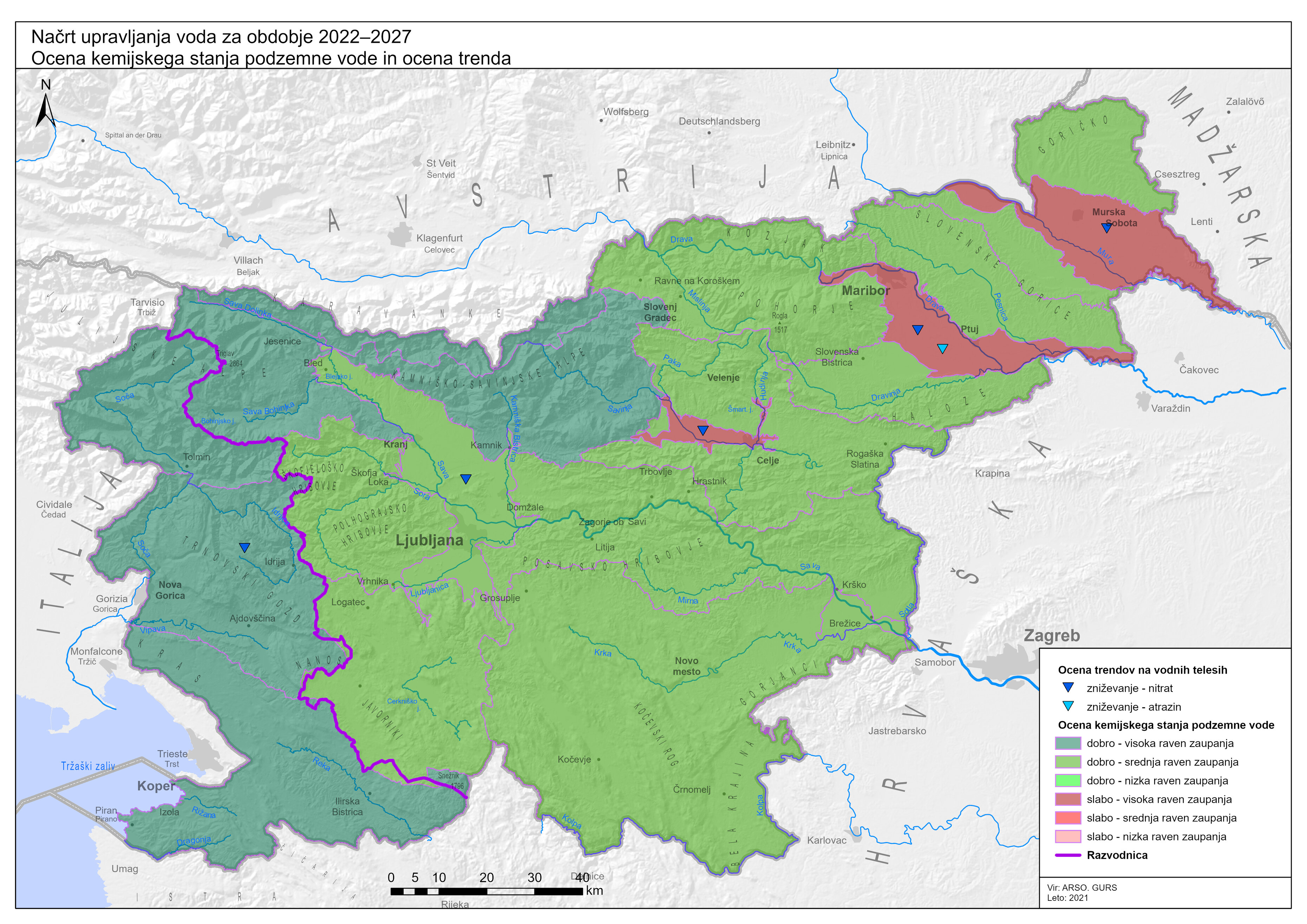-
-
-
-
-
-
-
-
Tools and collections
- Environmental atlas
- EIONET in Slovenia
- Environmental indicators
- IED devices
- Endangered species
- IS-waste

-
-
Tools and collections
- Environmental atlas
- EIONET in Slovenia
- Environmental indicators
- IED devices
- Endangered species
- IS-waste

[VD11] Groundwater quality

Key message

Groundwater is most polluted in aquifers with intergranular porosity in the northeastern part of Slovenia.
In the third water management plan (NUV) for the period 2022-2027, poor chemical status is determined for water bodies composed of aquifers with intergranular porosity, namely the Savinjska, Drava and Mura basins. The level of confidence in the assessment of the chemical status for these water bodies is high. The cause of the poor chemical status of these water bodies is nitrate and, in the case of the Drava Basin, also atrazine. A statistically significant trend of decreasing nitrate content was found in all three water bodies. The content of atrazine in the Drava Basin also decreases statistically significantly.
Groundwater in aquifers with karst and fissure porosity is of better quality. These aquifers need to be effectively protected due to their very high vulnerability.
Charts
ARSO, GURS, 2021 (februar, 2021)
Groundwater quality (GIS viewer), 2021 (februar, 2021)
| good[number of water bodies] | bad[number of water bodies] | all | |
|---|---|---|---|
| RBMP I (2006-2008) | 17 | 4 | 21 |
| RBMP II (2009-2013) | 18 | 3 | 21 |
| RBMP III (2014-2019) | 18 | 3 | 21 |
Goals
- To preserve a good chemical state of water in groundwater bodies;
- to improve the state of water in groundwater bodies in which the chemical state was assessed to be poor;
- to prevent upward trends in pollutant concentrations;
- to reverse upward trends in pollutant concentrations;
- to attain good chemical state of all groundwater bodies (environmental goals of Water Framework Directive, Article 4).
Methodology
Polona Mihorko, Marina Gacin, Slovenian Environment Agency







